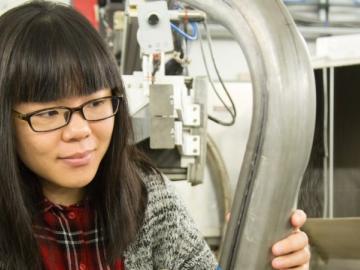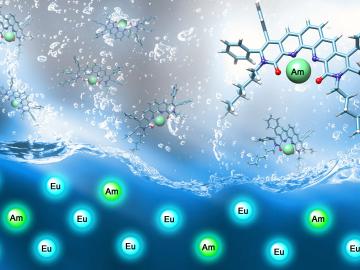Filter News
Area of Research
Media Contacts

The demand for lighter, stronger, and more durable materials for use in vehicles has never been higher. Companies are looking at new and advanced materials such as lightweight advanced high-strength steels (AHSS) to develop automotive components that help increase gas efficiency, red...

A tiny vial of gray powder produced at the Department of Energy’s Oak Ridge National Laboratory is the backbone of a new experiment to study the intense magnetic fields created in nuclear collisions.

The Precision Reactor Oscillation and Spectrum Experiment (PROSPECT) has completed the installation of a novel antineutrino detector that will probe the possible existence of a new form of matter.
PROSPECT, located at the High Flux Isotope Reactor (HFIR) at the Department of Energy...

“Made in the USA.” That can now be said of the radioactive isotope molybdenum-99 (Mo-99), last made in the United States in the late 1980s. Its short-lived decay product, technetium-99m (Tc-99m), is the most widely used radioisotope in medical diagnostic imaging. Tc-99m is best known ...

A new earth modeling system will use advanced computers and have weather scale resolution to simulate aspects of Earth’s variability and anticipate decadal changes that will critically impact the United States’ energy sector.
The Energy Exascale Earth System Model, or E3SM, relea...

After used nuclear fuel is removed from a reactor, it emits heat for decades and remains radioactive for thousands of years. The used fuel is a mixture of major actinides (uranium, plutonium), fission products (mainly assorted metals, including lanthanides) and minor actinides (i.e....

Scientists at the Department of Energy’s Oak Ridge National Laboratory are conducting fundamental physics research that will lead to more control over mercurial quantum systems and materials. Their studies will enable advancements in quantum computing, sensing, simulation, and mater...





